 W
WHuman sacrifice is the act of killing one or more humans as part of a ritual, which is usually intended to please or appease gods, a human ruler, an authoritative/priestly figure or spirits of dead ancestors, as a retainer sacrifice when a king's servants are killed in order for them to continue to serve their master in the next life. Closely related practices found in some tribal societies are cannibalism and headhunting.
 W
WÁlmos, also Almos or Almus, was—according to the uniform account of Hungarian chronicles—the first head of the "loose federation" of the Hungarian tribes from around 850. Whether he was the sacred ruler (kende) of the Hungarians, or their military leader (gyula) is subject to scholarly debate. According to Constantine Porphyrogenitus, he accepted the Khazar khagan's suzerainty in the first decade of his reign, but the Hungarians acted independently of the Khazars from around 860. The 14th-century Illuminated Chronicle narrates that he was murdered in Transylvania at the beginning of the Hungarian conquest of the Carpathian Basin around 895.
 W
WThe Annual Customs of Dahomey were the main yearly celebration in the Kingdom of Dahomey, held at the capital, Abomey. These ceremonies were largely started under King Agaja around 1730 and involved significant collection and distribution of gifts and tribute, religious ceremonies involving human sacrifice, military parades, and discussions by dignitaries about the future for the kingdom.
 W
WThe rituals of the Argei were archaic religious observances in ancient Rome that took place on March 16 and March 17, and again on May 14 or May 15. By the time of Augustus, the meaning of these rituals had become obscure even to those who practiced them. For the May rites, a procession of pontiffs, Vestals, and praetors made its way around a circuit of 27 stations, where at each they retrieved a figure fashioned into human form from rush, reed, and straw, resembling men tied hand and foot. After all the stations were visited, the procession, accompanied by the Flaminica Dialis in mourning guise, moved to the Pons Sublicius, the oldest known bridge in Rome, where the gathered figures were tossed into the Tiber River.
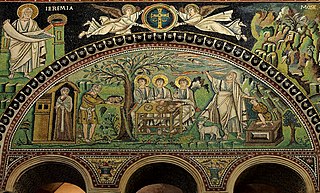 W
WThe Binding of Isaac is a story from the Hebrew Bible found in Genesis 22. In the biblical narrative, God tells Abraham to sacrifice his son, Isaac, on Moriah. Abraham begins to comply, when a messenger from God interrupts him. Abraham then sees a ram and sacrifices it instead.
 W
WA bog body is a human cadaver that has been naturally mummified in a peat bog. Such bodies, sometimes known as bog people, are both geographically and chronologically widespread, having been dated to between 8000 BCE and the Second World War. The unifying factor of the bog bodies is that they have been found in peat and are partially preserved; however, the actual levels of preservation vary widely from perfectly preserved to mere skeletons.
 W
WCrom Cruach was a pagan god of pre-Christian Ireland. According to Christian writers, he was propitiated with human sacrifice and his worship was ended by Saint Patrick.
 W
WDasius of Durostorum is a Christian martyr of the early 4th century AD. He was a Roman soldier of Legio XI Claudiana at Durostorum, Moesia Inferior who was beheaded in the early 4th century after his refusal to take the part of "king" in the local Saturnalia celebrations.
 W
WJeannette DePalma was an American teenager who is believed to have been murdered sometime on or around August 7, 1972 in Springfield Township, Union County, New Jersey, United States.
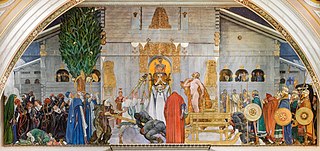 W
WDomalde, Dómaldi or Dómaldr was a legendary Swedish king of the House of Ynglings, cursed by his stepmother, according to Snorri Sturluson, with ósgæssa, "ill-luck". He was the son of Visbur.
 W
WA flower war or flowery war was a ritual war fought intermittently between the Aztec Triple Alliance and its enemies from the "mid-1450s to the arrival of the Spaniards in 1519." Enemies included the city-states of Tlaxcala, Huejotzingo, and Cholula in the Tlaxcala-Pueblan Valley in central Mexico. In these wars, participants would fight according to a set of conventions.
 W
WIn Greek mythology and later art, the name Hesione refers to various mythological figures, of whom the Trojan princess Hesione is most known.
 W
WHuman sacrifice was common in many parts of Mesoamerica, so the rite was nothing new to the Aztecs when they arrived at the Valley of Mexico, nor was it something unique to pre-Columbian Mexico. Other Mesoamerican cultures, such as the Purépechas and Toltecs, performed sacrifices as well and from archaeological evidence, it probably existed since the time of the Olmecs, and perhaps even throughout the early farming cultures of the region. However, the extent of human sacrifice is unknown among several Mesoamerican civilizations. What distinguished Maya and Aztec human sacrifice was the way in which it was embedded in everyday life and believed to be a necessity. These cultures also notably sacrificed elements of their own population to the gods.
 W
WDuring the pre-Columbian era, human sacrifice in Maya culture was the ritual offering of nourishment to the gods. Blood was viewed as a potent source of nourishment for the Maya deities, and the sacrifice of a living creature was a powerful blood offering. By extension, the sacrifice of human life was the ultimate offering of blood to the gods, and the most important Maya rituals culminated in human sacrifice. Generally, only high-status prisoners of war were sacrificed, with lower status captives being used for labor.
 W
WThe practice of human sacrifice in pre-Columbian cultures, in particular Mesoamerican and South American cultures, is well documented both in the archaeological records and in written sources. The exact ideologies behind child sacrifice in different pre-Columbian cultures are unknown but it is often thought to have been performed to placate certain gods.
 W
WHuman sacrifice in the ancient Iberian Peninsula is recorded in classical sources, which give it as a custom of Lusitanians and other Celtic peoples from the northern area of the peninsula. Its most complete mention comes from the work of Greek chronicler Strabo, in which those ceremonies have a divinatory utility. Modern authors have seen in this phenomenon hints of a possible priestly class among the mentioned peoples, similar to but differentiated from European Celtic druids.
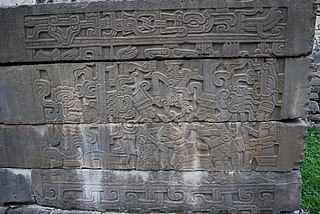 W
WMost of the ancient civilizations of Mesoamerica such as the Olmec, Maya, Mixtec, Zapotec and Aztec cultures practiced some kind of taking of human trophies during warfare. Captives taken during war would often be taken to their captors' city-states where they would be ritually tortured and sacrificed. These practices are documented by a rich material of iconographic and archaeological evidence from across Mesoamerica.
 W
WIn Greek mythology, Idomeneus was a Cretan king and commander who led the Cretan armies to the Trojan War. He was also one of the suitors of Helen, as well as a comrade of the Telamonian Ajax. Meriones was his charioteer and brother-in-arms.
 W
WIn Greek mythology, Iphigenia was a daughter of King Agamemnon and Queen Clytemnestra, and thus a princess of Mycenae.
 W
WJephthah, appears in the Book of Judges as a judge who presided over Israel for a period of six years. According to Judges, he lived in Gilead. His father's name is also given as Gilead, and, as his mother is described as a prostitute, this may indicate that his father might have been any of the men of that area. Jephthah led the Israelites in battle against Ammon and, in exchange for defeating the Ammonites, made a vow to sacrifice whatever would come out of the door of his house first. When his daughter was the first to come out of the house, he immediately regretted the vow, which would require him to sacrifice his daughter to God. Jephthah then carried out his vow. Traditionally, Jephthah is listed among major judges because of the length of the biblical narrative referring to him, but his story also shares features with those of the minor judges, such as his short tenure—only six years—in office.
 W
WKhonds are a tribal community in India. Traditionally hunter-gatherers, they are divided into the hill-dwelling Khonds and plain-dwelling Khonds for census purposes; all the Khonds identify by their clan and usually hold large tracts of fertile land but still practice hunting, gathering and slash-and-burn agriculture in the forests as a symbol of their connection to and ownership of the forest. Khonds speak the Kui and Kuvi languages and write them in Odia script.
 W
WIn Greek mythology, Lycaon was a king of Arcadia who, in the most popular version of the myth, tested Zeus' omniscience by serving him the roasted flesh of Lycaon's own son Nyctimus, in order to see whether Zeus was truly all-knowing.
 W
WThe Mesha Stele, also known as the Moabite Stone, is a stele dated around 840 BCE containing a significant Canaanite inscription in the name of King Mesha of Moab. Mesha tells how Chemosh, the god of Moab, had been angry with his people and had allowed them to be subjugated to Israel, but at length, Chemosh returned and assisted Mesha to throw off the yoke of Israel and restore the lands of Moab. Mesha describes his many building projects. It is written in a variant of the Phoenician alphabet, closely related to the Paleo-Hebrew script.
 W
WMount Lykaion is a mountain in Arcadia, Greece. Lykaion has two peaks: Stefani to the north and St. Ilias to the south where the altar of Zeus is located.
 W
WMomia Juanita, also known as the Lady of Ampato is the well-preserved frozen body of an Inca girl who was killed as an offering to the Inca gods sometime between 1440 and 1480 when she was approximately 12–15 years old. She was discovered on the dormant stratovolcano Mount Ampato in southern Peru in 1995 by anthropologist Johan Reinhard and his Peruvian climbing partner, Miguel Zárate. She is known as the Lady of Ampato because she was found on top of Mount Ampato. Her other nickname, the Ice Maiden, derives from the cold conditions and freezing temperatures that preserved her body on Mount Ampato.
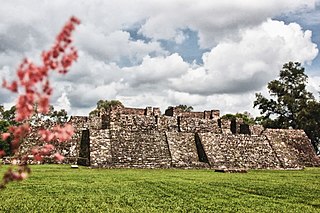 W
WThe New Fire Ceremony was an Aztec ceremony performed once every 52 years—a full cycle of the Aztec “calendar round”—in order to stave off the end of the world. The calendar round was the combination of the 260-day ritual calendar and the 365-day annual calendar. The New Fire Ceremony was part of the “Binding of the Years” tradition among the Aztecs.
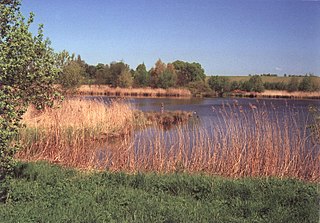 W
WThe Opfermoor Vogtei is an open-air museum at the location of a prehistoric and protohistoric sacrificial bog in the municipality of Vogtei, Thuringia, in Germany. It lies within the former municipality of Oberdorla, approximately 200 metres (220 yd) from Niederdorla, and the site is also known by those names.
 W
WOran or Odran, by tradition a descendant of Conall Gulban, was a companion of Saint Columba in Iona, and the first Christian to be buried on that island. St. Odhrán's feast day is on 27 October.
 W
WThe Plomo Mummy is the well preserved remains of an Incan child found on Cerro El Plomo near Santiago, Chile in 1954. It was discovered by Guillermo Chacón Carrasco, Jaime Ríos Abarca, and Luis Gerardo Ríos Barrueto. The mummy was brought to the attention of Grete Mostny at the Chilean National Museum of Natural History; she later proved instrumental in the museum's acquisition of the specimen. The Plomo Mummy was the first notable frozen mummy discovery of high-altitude Capacocha human sacrifice by the Incas, a practice called qhapaq hucha.
 W
WIn Greek mythology, Polyxena was the youngest daughter of King Priam of Troy and his queen, Hecuba. She does not appear in Homer, but in several other classical authors, though the details of her story vary considerably. After the fall of Troy, she dies when sacrificed by the Greeks on the tomb of Achilles, to whom she had been betrothed and in whose death she was complicit in many versions.
 W
WThe Sacred Cenote is a water-filled sinkhole in limestone at the pre-Columbian Maya archaeological site of Chichen Itza, in the northern Yucatán Peninsula. It is located to the north of Chichen Itza's civic precinct, to which it is connected by a 300-metre (980 ft) sacbe, a raised pathway.
 W
WSati or suttee is a historical Hindu practice in which a widow sacrificed herself by sitting atop her deceased husband's funeral pyre. Greek sources from around 300 BCE make isolated mention of sati, but it probably developed into a real fire sacrifice within the northwestern Rajput Kshatriya (warrior) varna, to which it remained limited, and became regular only after 500 CE, to become wider-spread during the Muslim-era.
 W
WA wicker man was a large wicker statue reportedly used by the ancient Druids for sacrifice by burning it in effigy.